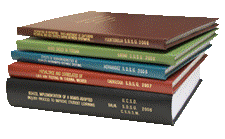Libraries, University of Nebraska-Lincoln

Archival Master’s Theses from the University of Nebraska-Lincoln
Date of this Version
5-1973
Document Type
Thesis
Citation
Thesis (M.S.)—University of Nebraska—Lincoln, 1973. Department of Agronomy.
Abstract
The problems of animal waste management, disposal, and utilization have multiplied with increased feeding operations.Disposal of animal waste has become an important issue in Nebraska where it is estimated that there are 14,000-15,000 acres of land used for feedlots (Swanson, 1970).As feedlot acreage increased, disposal of solid and liquid wastes has become very important.For many years manure has been applied to croplands and runoff from feedlots has been allowed to drain ultimately into streams.As feedlots increased in size, new methods of waste disposal have been employed.Solids may be left on the soil surface to accumulate or pushed into mounds, or spread over the cropland.
The control of runoff from feedlots is a little more complex.The runoff is usually collected in a lagoon, the effluent is temporarily stored, and then it is disposed.
The main objective of present study is to apply effluent from feedlots to cropland and to determine its effects upon the physical properties of the soil.Some research on the effect of feedlot runoff effluent upon the soil has been done in laboratory experiments but field information is needed to relate to natural conditions.Specific objectives of the investigation are to obtain information on the influence of effluent applications on soil physical properties and to recommend management practices.
These objectives are:
1.The amount of effluent to be applied at each application.
2.The frequency of application of effluent considering precipitation
3.Total maximum annual application of effluent.
4.Relate the amount of effluent to rainfall.
5.Effects of continued effluent applications on the physical properties of the soil.
Many of these objectives may not be realized entirely with a two year study. Therefore a longer term experiment might prove beneficial in fulfilling these objectives.
Advisors: Andrew P. Mazurak and Norris P. Swanson


Comments
Copyright 1973, the author. Used by permission.